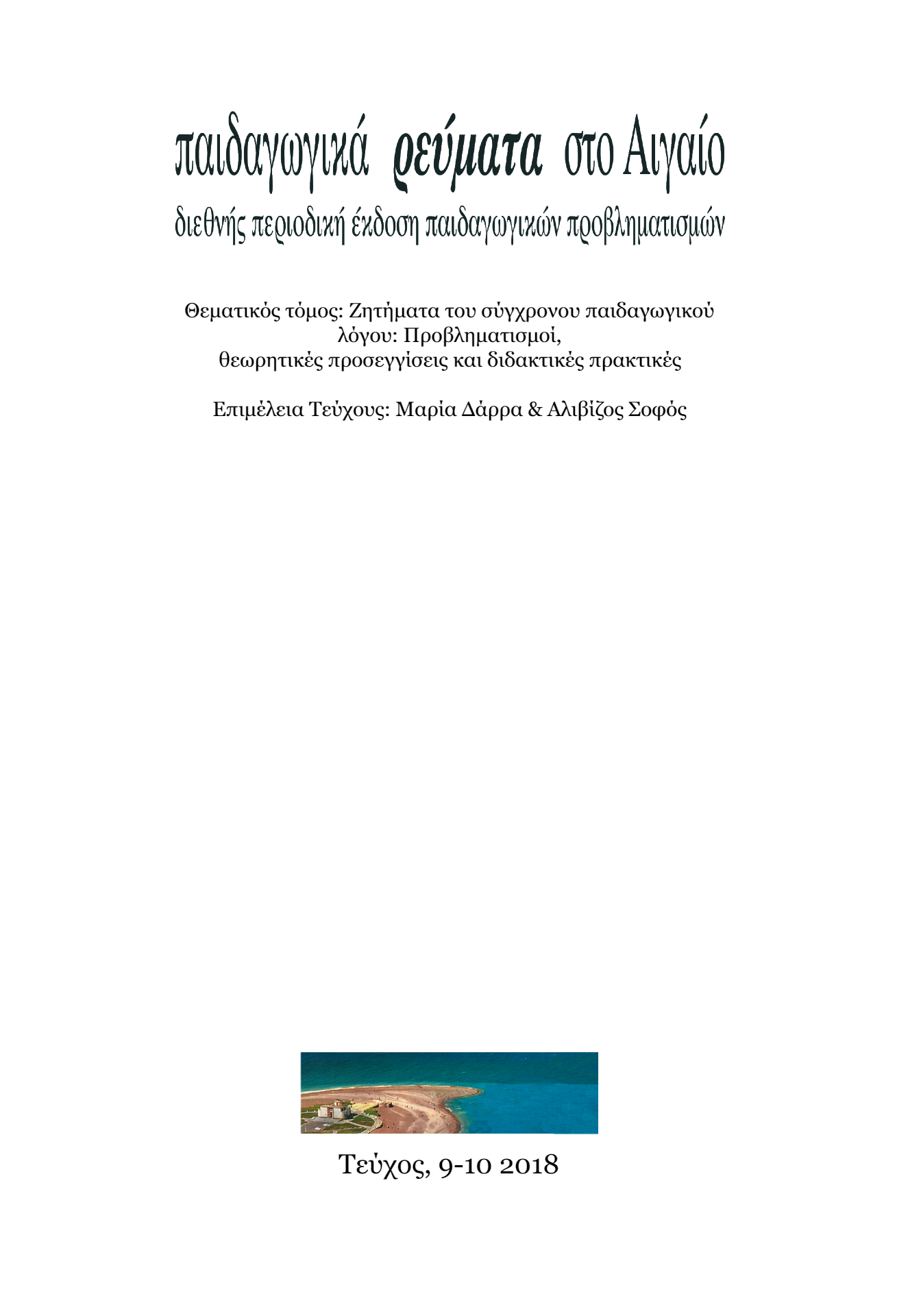Η Αισθητική – Καλλιτεχνική Εκπαίδευση στην ευρύτερη Νησιωτική Περιοχή της Δωδεκανήσου
Περίληψη
The dialectical relationship between the traditional and the contemporary, which surrounds every human expression, is the dominant feature of both art and architecture, as manifested in practice and theory and is the subject of this study. The aim is to search, investigate through all the elements that coexist in traditional and modern environment, those constants that can seem beneficial in interpretation, in experiencing and recreating the Greek island tradition.
A child who is going to be an islander, a tomorrow's citizens learns to be inspired by the cultural heritage seeking to offer to the society through rebuilding, changing and adaptation that will stem from the historical validity, modern trends and expressed improvement and progress. The reciprocal relationship between traditional and modern art provides to a child a holistic approach to the environment, giving impulses of high quality in different areas, such as History, Architecture, Folklore, Literature, Culture in producing quality goods. The global approach of an aesthetic education that begins in early childhood is one of the sectors that can effectively help in this direction: awareness of the need for maintenance and upgrading of tradition with a view to productive coupling of traditional with modern.
Λεπτομέρειες άρθρου
- Πώς να δημιουργήσετε Αναφορές
-
Καμπουροπούλου Μ. (2022). Η Αισθητική – Καλλιτεχνική Εκπαίδευση στην ευρύτερη Νησιωτική Περιοχή της Δωδεκανήσου. Παιδαγωγικά ρεύματα στο Αιγαίο, 9(1), 41–66. https://doi.org/10.12681/revmata.31162
- Τεύχος
- Τόμ. 9 Αρ. 1 (2016)
- Ενότητα
- Θεωρείο

Αυτή η εργασία είναι αδειοδοτημένη υπό το CC Αναφορά Δημιουργού – Μη Εμπορική Χρήση – Παρόμοια Διανομή 4.0.



